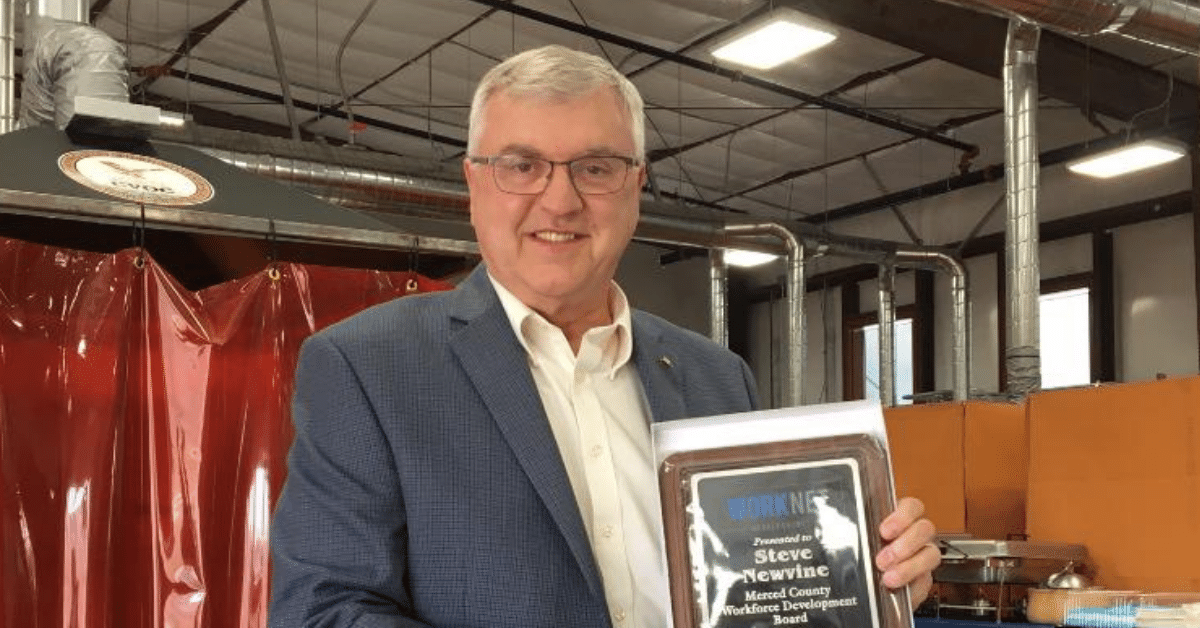
Golf Hazards
photo by steve newvine
Having spent a lot of time on golf courses over the past few years, one can discover certain types of hazards. Some are a direct result of nature. Some are a direct result of human nature.I squeeze in at least one nine-hole round of golf every week.
Before moving to California from the northeastern United States nine years ago, golf season lasted all of five months. I can now play every week of the year. For about the past three years, playing golf every week for fifty-two weeks has been my New Years’ resolution. I have not achieved it yet, but I’m getting closer to that goal every year.
As for hazards, why would anyone complain about a golf season that never ends? I don’t complain. But I have encountered some problems on local courses that might give the golf purist reason to become rankled. So with my tongue firmly in my cheek, here are some frustrations I’ve endured.
Earlier in the spring, I found tumbleweeds littering one of my favorite courses. They would roll through the fairway as they made their way across the landscape. Some remain stationary as I approached a putting green. They’re easy to move out of the way, but they have proven to be a pesky diversion.
I usually see tumbleweeds in the spring, and they usually are accompanied by winds; another nature-induced hazard. All I need is the cowboy singing group Sons of the Pioneers to serenade my golf group with the song Tumbling Tumbleweeds.
I remember one night a few years ago playing at the Rancho Del Rey course in Atwater. I was walking up to the putting green to survey what my chances would be to sink a putt. Pondering the possibility of getting par on the hole, I spotted a dog from one of the homes that encircle the course coming up onto the green.
The dog was friendly, but a little greedy. It picked up my ball with its mouth and ran away. I never saw that ball again. While amused by the dog’s behavior, I can only wonder what kind of ruling I would have received had the animal dropped the ball in the cup.
Nature and animals are always watched by golfers for potential hazardous situations. But one shouldn’t leave out the human element when it comes to difficult days on the golf course.
A golf partner and I were behind a group of young men on an area course one hot summer afternoon. These young men were learning the game, but had not yet mastered the elements of etiquette expected from more seasoned golfers. In short, they couldn’t keep their mouths shut.
I remember both my partner and I sharing a bemused laugh after one of the golfer’s struck his ball and yelled to the other members of his foursome, “Hey you guys better watch out, my ball might hit you.”
Hey pal, we have a term for that particular situation. One word spoken loudly: fore!
On a least a couple of occasions in my three decades of playing the game, I have encountered the kindly older gentleman who believes a golf course is the perfect place to discuss religion. Whether it’s asking where I am in my faith journey, or whether I know what the true meaning is of an upcoming religious holiday, I really don’t want to discuss it while I’m trying to break forty on the front nine.
I try to be polite. If that ever happens to me again, I’ll remind the well-intentioned proclaimer what the Reverend Billy Graham has said about religion and the game of golf. “The golf course is the only place where the Lord doesn’t answer your prayers.”
I have lots of disappointing score cards to prove that point.
Steve Newvine lives in Merced
Learning From Teaching
I have the first graders at Elmer Wood Elementary School in Atwater to thank for giving me a reason to have hope for our future generations. I presented a Junior Achievement program to Ms Harris’ class on May 5. Junior Achievement is a national non-profit program designed to provide children of all ages with a better understanding of business and how a strong business sector can help foster stronger and safer communities. The program uses volunteers from the local community.
The volunteers come into the classroom armed with a learning "kit" of lesson plans and classroom materials such as posters, handouts, and take home items. The take home items included refrigerator magnets and postcards. After an orientation session, the volunteers are ready to teach the program in classes signed up to the program.
I was a J-A presenter in a second grade class about ten years ago when I lived in upstate New York. I still cherish a group photo presented to me by the class when I finished that five-unit program.
Fast forward ten years to 2011 and I find that not much has changed in how the program is set up and executed. I picked up my learning kit the night before my class.
I had to skip any orientation due to the short time frame between signing up and presenting. Fortunately, my previous experience from the 1990's prepared me for what to expect of the program.
I arrived at Elmer Wood School at 7:30 am, signed in at the principal's office, and was directed to the classroom. There, I met twenty smiling faces and Ms Harris. She helped me set up the room with a giant poster of a small community. After giving me an introduction, she sat close by as I began my presentation.
The J-A courses are generally broken down into five sections. Ten years ago, I presented these sections over a five-week period. This time around, I would present all five sections in one three-hour period. Talk about pressure!
The first section dealt with that poster we put up on the wall in front of the class. The students were encouraged to point out things they were familiar with such as a school bus, children, trees, and pets.
From this participation exercise, we were able to define a family as a special group of people who may differ in age and relationships but who are connected to one another in some way. We even concluded that different types of family members live in our community and that they all can help one another make it a good place to live.
Part two was about making the distinction between what you need and what you want. Again, there was a lot of class participation as I held up pictures of things we need, such as: healthy food, clothing, and a home; as well as pictures of things we want, such as: an ice cream cone, a video game, and a pet.
Some of the students challenged the idea that a pet is a "want" rather than a "need". As a pet owner (our cat Bob has been with us for twelve years), I tend to agree with the kids.
The third unit helped the children define what a job is and why a job is important in helping families acquire their wants and needs.
Junior Achievement kits contain workbooks and handouts so that the students can participate in developing their own vision of jobs and career paths. These young people were only six and seven years old, but already they are getting ideas about what they would like to do when they grow up.
Session four was the most active section when I placed a large map of the neighborhood on the floor. The students circled around the map and took turns pointing out such things as a police station, a school building, a hospital, and a fire station.
We connected the locations on the maps to the concept of "does this place provide us with a want or a need?" The children enjoyed this session the most. I suspect they enjoyed this the most because they could finally get away from their desks and form a circle around the floor map.
We wrapped it up in the final section with a review of everything covered in the previous four sections and making the point that jobs help families live better lives. I stressed how their hard work in school would eventually earn them a diploma.
I then handed out certificates of completion to the group. The certificates were prepared by J-A coordinator Michelle Gonzales in anticipation of a successful completion of the five sessions.
The group was very appreciative of my visit and wished me a safe day as I prepared to leave. I packed up what remained of my Junior Achievement kit, and left the school at the end of the morning.
I really have to hand it to the teachers who are with our children most of the day. They have to be nurturing, firm, and in control throughout the day. Without these key components, the J-A program could not achieve the level of success is has achieved over the years.
But I really have to give a shout out to the students. Their attention to the material being presented, their naturally inquisitive nature, and their enthusiasm really made an impact on me. As a volunteer presenter, I got so much out of this group of eager young people.
I'm thankful to work for a company that encourages volunteer opportunities such as Junior Achievement and permits me time away from the regular workday to participate in these activities. I was impressed with the level of support received by the program coordinator in preparing for my day-in-the-classroom.
And I was overwhelmed by the dedication to learning I observed in the teacher Ms Harris.
Most of all, I felt honored to be in the presence of our future generation of learners. They are beginning to form ideas about how they can contribute to their communities.
They are getting ideas every day about how they might contribute to improving the quality of life when they leave school.
If this first grade class at Elmer Wood Elementary in Atwater is any indication, I think we are in good hands.
They have given me renewed hope in the future.
Steve Newvine lives in Merced and is a member of the Business Education Alliance of Merced, (BEAM) an organization of business people and educators working together to help produce a world class workforce in Merced County. BEAM is affiliated with the Merced County Office of Education.






To explore Steve Newvine's complete collection of books, simply click on the link below.
CLICK HERE
Steve is also open to delivering speeches for service club programs and other public speaking engagements.
Contact him at: SteveNewvine@sbcglobal.net